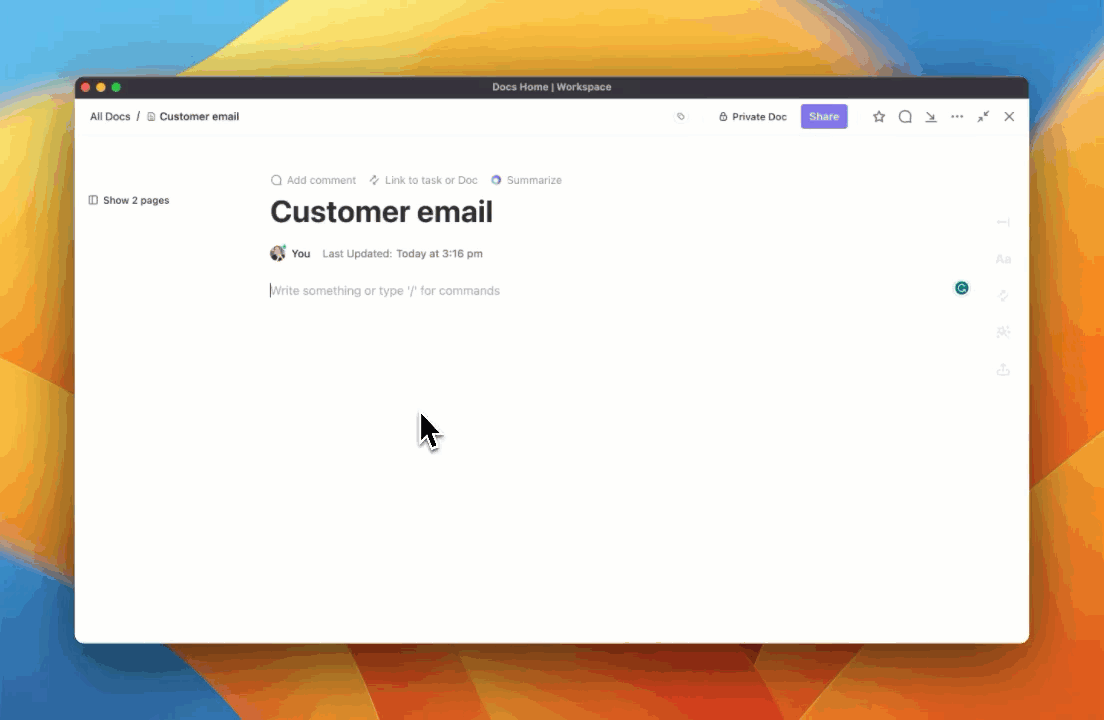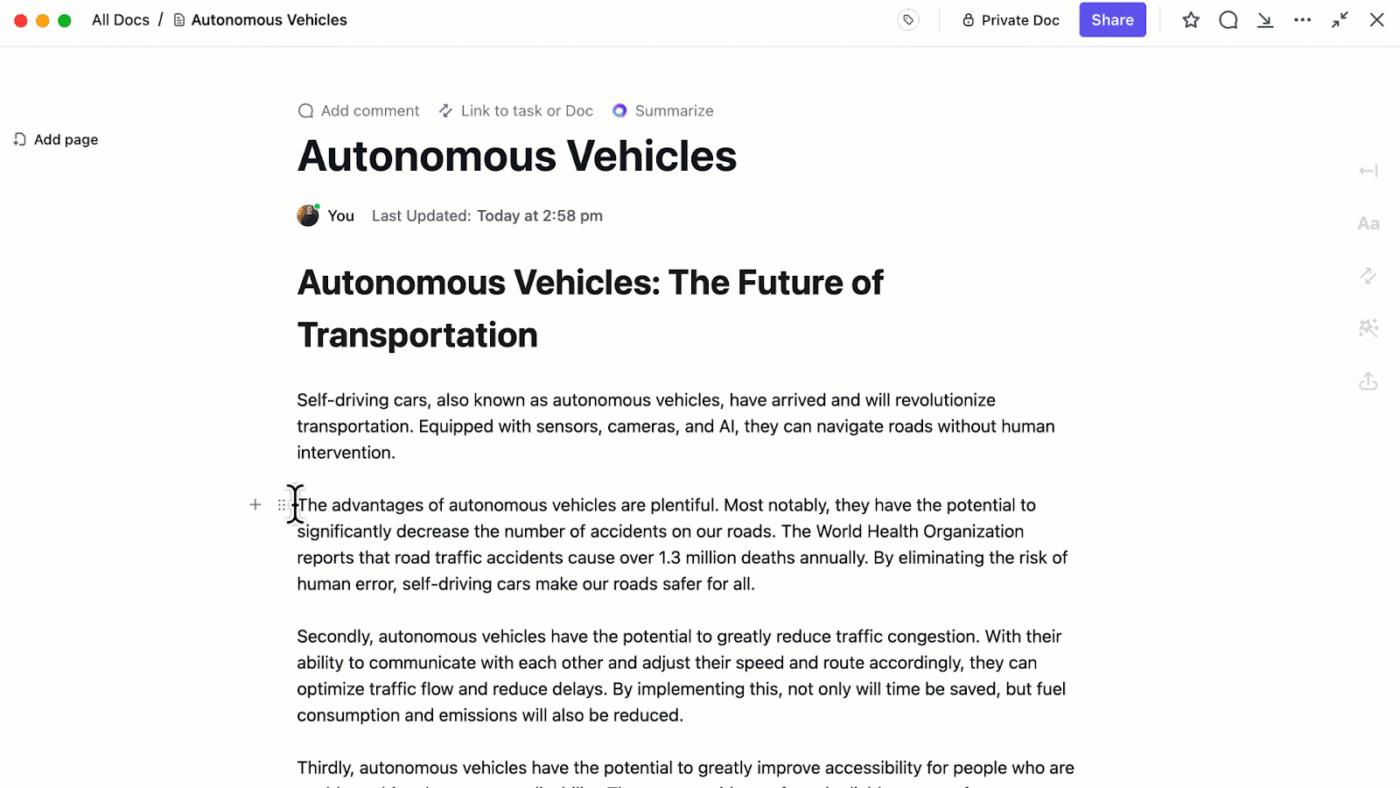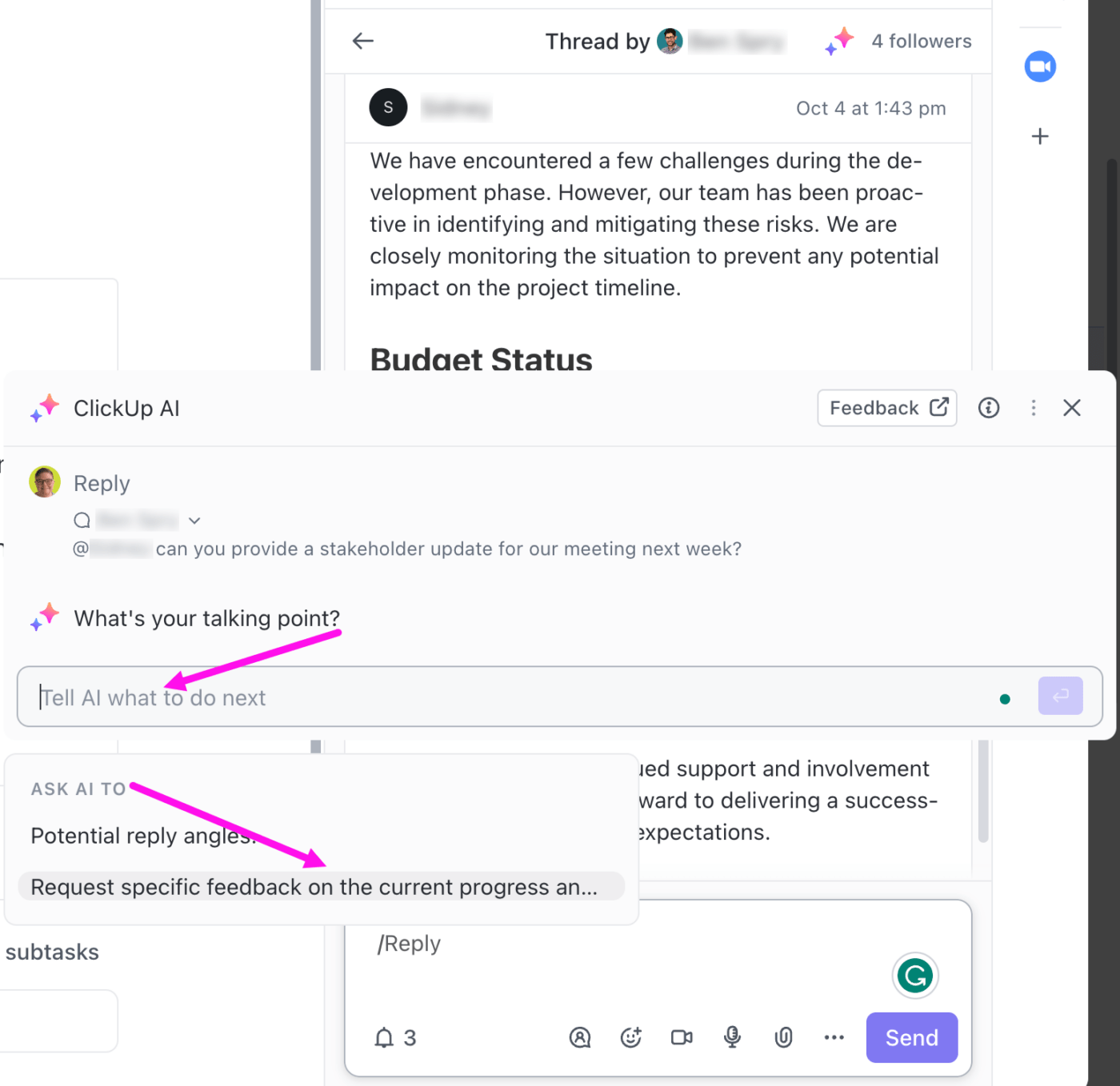

Should you work on that much-awaited new product feature this quarter, or should you fix that annoying bug many users have complained about?
Should you add resources to a project that’s getting delayed, or should you keep costs from escalating?
Project leaders must make tough calls that can make or break a project.
Quick, effective, and informed decision-making is necessary for successful project execution. To improve decision-making, you need a system that helps you make the right choice at the right time. Also, it should lead to the desired outcome.
The DACI decision-making framework is one such model, used widely across industries for group decisions.
In this article, we’ll explore the DACI framework, its components, real-life applications, and how you can use it to boost your team’s collaborative efforts.
- What Is the DACI Framework?
- Roles and Responsibilities in the DACI Decision Model
- How to Implement the DACI Framework
- DACI Decision-Making Framework Examples
- Comparing the DACI Framework with Similar Models
- Tips for Implementing DACI in Projects
- Paving the Way to Project Success with the DACI Framework
- Frequently Asked Questions (FAQ)
What Is the DACI Framework?
DACI (an abbreviation for ‘Driver, Approver, Contributor, Informed’) is a decision-making framework useful for projects with multiple stakeholders. It helps organizations assign roles and responsibilities to team members and external stakeholders, eliminate ambiguity, set clear expectations, and improve accountability.
The acronym DACI is formed by combining the names for these roles and responsibilities:
- The driver is the person who drives the decision
- The approver is the person who makes the decision
- Contributors are the people or teams whose work or knowledge aids the project
- Informed are the people whose work might be informed by these decisions and who may need to be included in the loop
By using DACI, teams can ensure everyone knows their role in the decision-making process, leading to faster decisions, improved output quality, and increased accountability.
Roles and Responsibilities in the DACI Decision Model
Let’s explore the four components in greater depth.
Driver
The Driver in the DACI decision making process is usually the project manager or leader who takes the project forward. Their role is to accumulate project-related information, collect inputs from Contributors, and recommend a project plan to the Approver.
They are involved at every step of the project lifecycle from the start till the end. They also coordinate with external stakeholders and communicate their concerns to internal team members.
The Driver must possess extensive knowledge and understanding of the project to oversee its different aspects and intervene effectively when required. They should also have good communication skills, as most of their work entails collaborating with the other DACI roles.
The Driver’s core responsibilities are to:
- Develop a project plan including a task list, details of each task, key performance indicators (KPIs), and deadlines
- Allocate tasks and track the team’s progress
- Drive collaboration among the Approver, the Contributors, and the Informed
Approver
The Approver analyzes the inputs of the Driver and the Contributor and makes the final decision. They belong to a position of authority and include personas, such as the founder, executive, or manager. Some projects may have multiple Approvers, but it’s better to keep the number minimum to fast-track the decision-making process.
They should keep an open mind to look at a proposed solution from multiple perspectives before giving it the go-ahead or vetoing it.
The Approver’s job is to:
- Have the final say on a decision
- Study the inputs and evaluate them from different angles
- Approve or reject the idea/solution
Contributor
The Contributors add valuable opinions and expertise to the decision-making process. In the DACI framework, Contributors can be experienced team members, subject matter experts, or stakeholders who might be directly affected by the decision. The Driver selects and appoints Contributors based on their skills, relevant experience, and project requirements.
Usually, multiple Contributors assess the problem from multiple points of view and provide consultation on a wide range of project decisions.
The Contributor’s job is to:
- Offer inputs on project decisions
- Provide constructive feedback
- Bring new perspectives into the decision-making process
Informed
This group of people isn’t directly associated with the project, but they need to stay informed about the team’s decision-making process, progress, and outcome.
For example, in a product development project, sales and marketing executives are the Informed group. While they don’t participate in the hardcore development process, they must stay in the loop to devise sales strategies and marketing campaigns based on the dev team’s project outcomes.
At a glance, the job of the Informed is to:
- Stay up-to-date with the team’s progress and decisions
Well-defined roles within the DACI system align agile, cross-functional teams with the principles of project management (i.e., the key concepts leading to successful project execution).
They ensure every decision you make at the organization is backed by expert analysis and stakeholder approval, and everyone concerned with the project knows its plan of action and progress.
How to Implement the DACI Framework
Once you understand the key roles within the DACI decision-making framework, it’s time to implement the model and iron out the kinks in your decision-making process.
Here’s a step-by-step guide:
1. Break down projects into tasks
Divide big projects into small, manageable tasks to ensure quick and easy decision-making. The team has to set up a list of action items or tasks and prioritize them. No need to create an elaborate project plan at this point; only identifying the tasks would be enough.
2. Appoint a Driver
Assign a main Driver to supervise the entire project. The team must also appoint an individual Driver for each task to avoid missing out on vital tasks or burdening one project manager with multiple tasks.
The combined effort of the multiple Drivers will ensure the Tasks move toward progress independently and each task gets equal treatment.
3. Select Approver and Contributor
The next step is to agree upon the Approvers and assign Contributors for each task. If the project involves multiple departments, there can be multiple Approvers.
The Driver can select, add, and remove Contributors at any time. A rule of thumb is to ensure each task has at least one subject matter expert as a Contributor so the project team can fall back on them for insights and unique perspectives.
4. Determine who should be informed
Identify which stakeholders have a vested interest in the project and which departments are affected by the project’s decisions. The Driver has to stay in touch with them to provide regular updates.
5. Define your workflow
This is the time for the Driver to start working on a plan of action. They have to answer the following questions to define their workflow:
- How often will the team meet?
- How will you track the project’s progress?
- How will the rest of the team collaborate with the Contributors?
- How will you keep the Informed updated?
- How will the main Driver coordinate with the task Drivers?
If you’re dealing with complex projects involving multiple team members, a project management software like ClickUp can help keep everyone on the same page.
For instance, ClickUp’s DACI Model Template offers a customizable framework to assign roles and responsibilities following the DACI decision-making style. You can use it to get a high-level overview of the team, monitor progress, and track results.
Customize the template to fit your project’s needs and keep your team organized. Project managers can benefit from it in many ways:
- Define roles and responsibilities clearly as per the DACI model
- Establish transparent communication channels between team members
- Improve accountability among team members
- Ensure all stakeholders are part of the decision-making process
- Stay updated with task progress
- Reduce project risks by making decisions quickly and efficiently
This comprehensive template encourages collaboration among the Driver, Approver, Contributor, and Informed and simplifies decision-making.
DACI Decision-Making Framework Examples
From tech companies to social organizations, you can tailor the DACI framework for different types of business entities.
Let’s look at a few examples:
Product development at a tech startup
Driver: The product manager drives the development of a new feature for the startup’s mobile app
Approver: The CTO or head of engineering approves the technical specifications and feasibility of the feature
Contributor: Developers and designers contribute their expertise in coding, UX/UI design, and testing
Informed: Marketing and customer support teams are informed about the upcoming feature release to prepare for promotion and handle customer inquiries
Supply chain management at a manufacturing company
Driver: The supply chain manager drives the implementation of a new inventory management system
Approver: The CFO approves the budget allocation for purchasing the software and implementing the system
Contributor: Logistics managers, warehouse staff, and IT professionals contribute by providing insights, setting up the system, and training staff
Informed: Sales and procurement teams are informed about changes to the supply chain process to adjust their strategies accordingly
Environmental conservation project at a non-profit
Driver: The Executive Director organizes a beach cleanup campaign to raise awareness about marine pollution
Approver: The Board of Directors approves the project proposal, budget, and overall strategy for the beach cleanup campaign
Contributor: Volunteers, environmental scientists, and local community members contribute by participating in cleanup activities, providing expertise on waste management, and mobilizing resources
Informed: Partner organizations, local government authorities, and media outlets are informed about the beach cleanup campaign to garner support, coordinate efforts, and amplify its impact
Comparing the DACI Framework with Similar Models
Apart from the DACI framework, project managers can try other group decision-making techniques, such as RACI or RAPID, depending on the requirements of their project.
1. RACI
RACI stands for Responsible, Accountable, Consulted, and Informed.
While it’s quite similar to DACI, the primary difference is that RACI prioritizes individual responsibilities, as opposed to DACI’s decision-based approach to project management.
DACI appoints a single Driver per task, but in the RACI matrix, multiple responsibility holders for each task can exist.
When should you use the RACI model?
The RACI model is effective when a project is divided into many small tasks or the organization wants to increase employee and stakeholder engagement.
2. RAPID
RAPID stands for Recommend, Agree, Perform, Input, Decide.
While both DACI and RAPID have a role focused on leading the effort (Driver in DACI and Recommend in RAPID), the approach is a little different.
The Driver in DACI initiates and leads the decision-making process, whereas the Recommend role in RAPID focuses on developing recommendations for a decision.
When should you use the RAPID model?
Organizations can use the RAPID framework when they want to get a decision vetted by all employees. For example, it can be deployed while implementing a new leave policy.
However, RAPID may not work when you have to make quick decisions at the higher management levels.
Tips for Implementing DACI in Projects
Follow these tips to implement the DACI framework in your organization and transform the way you make decisions.
1. Conduct needs assessment
Before starting with the DACI model, conduct a needs assessment at your organization to locate the gaps between current and desired outcomes.
Here’s a quick guide:
- Set project goals or objectives, milestones, and deliverables
- Evaluate if the available resources align with the project requirement
- Identify your team’s needs and stakeholders’ expectations by conducting surveys or interviews
- Develop an action plan including the strategies for decision-making, task deadlines, and roles of team members
This process is easy for small projects with a few employees and stakeholders. However, for high-value projects with hundreds or even thousands of people involved, you need a needs assessment template to maintain structure and cohesion.
Take ClickUp’s Gap Analysis Template, for example.
Divided into four columns, it allows you to outline four aspects of your business necessary for needs assessment:
- Current State: List down your business’ pain points
- Desired State: Envision the outcomes you want your business to achieve in the future
- Gap: Compare the previous two columns to identify room for improvement
- Action Plan: Devise a new plan of action to realign your project objectives/goals with the first three columns
Use this framework to evaluate how your operations are performing against customer expectations, organizational objectives, and industry standards.
You can identify your team’s/business’s strengths and weaknesses, find opportunities for improvement, and set attainable goals, no matter how big or complex your workflows are.
2. Have enough time at hand
Create a realistic timeline to implement the DACI framework. Offer enough time for team members to add their inputs and approve the processes to stick to the deadlines without overburdening themselves with work.
3. Encourage open communication
The Driver or the project manager has to create a collaborative work environment with clear communication channels.
The Contributors should feel comfortable sharing their opinions, and the Approvers should be able to accept or veto the decision without hurting the team’s morale. The organization should also give the Driver enough authority to lead the team.
4. Use the right tools for smart decision-making
You can simplify long-winded, complex decision-making processes with the right tech stack, such as using a project management system with AI capabilities.
ClickUp Brain, for instance, gives you access to conversational, contextual, and role-based AI features to stay on top of your organization’s people, work, and knowledge.
Let’s see how project managers can use ClickUp Brain for smart and efficient decision-making:
- Get access to research-based prompts written by industry experts to speed up your work

- Use the prompts to create role-specific content, such as project plans and materials for internal and external communications

- Refine the generated content using AI to fit your specific business needs

- Know what your team members are working on with the Write StandUp feature and minimize the need for frequent project meetings

- Generate automated project summaries, status reports, and accurate progress updates for ClickUp Tasks and ClickUp Docs and make data-driven decisions

- Reply to Task comments with AI and save time

With AI taking care of the routine tasks, you can shift focus to core decision-making and strategizing—tasks that move the needle and result in incremental progress.
5. Review the decision-making process regularly
Once the team makes a decision, revisit the decision-making process to analyze what worked well and what could have been better. Note down the key learnings and use them in the future to make swift and impactful decisions.
6. Put the tips into action
Now’s the time to wind up the loose threads and translate these tips into real-life business situations. Setting up a DACI framework from ground zero is time-consuming, so you can structure your projects around readymade templates for a smooth start.
ClickUp’s DACI Model Template is a helpful tool to keep your team organized, define the roles and responsibilities of group members, and make the right decision without wasting time.
You can also explore other decision-making templates, depending on the size, complexity, and type of project.
Paving the Way to Project Success with the DACI Framework
The DACI framework helps employees and external partners understand their role in the bigger picture of a project. It propels them to stay accountable to the project outcomes, resulting in improved efficiency and velocity. The framework equips you to confidently make better and bolder decisions without wasting too much time pondering the ifs and buts.
Whether this is your first initiation with a decision-making framework or you plan to improve your existing system, the best way to use DACI is to pair it up with a comprehensive project management platform like ClickUp.
From AI tools, collaboration tools, and ready-to-use templates to an elaborate set of features for setting and tracking tasks, this software offers everything you need to drive your project forward.
Get started with ClickUp, and become a pro at making smarter decisions faster!
Frequently Asked Questions (FAQ)
1. What is the difference between RACI and DACI?
RACI and DACI are frameworks used in project management but for different purposes. The former is a task management model, while DACI is a decision-making framework.
RACI stands for:
R – Responsible: The person who performs the task
A – Accountable: The person ultimately responsible for the task’s completion
C – Consulted: Someone who provides input or approval before a task moves forward
I – Informed: Someone who needs to be updated on the task’s progress
DACI stands for:
D – Driver: The person who keeps the decision-making process moving forward
A – Approver: The person with the final say on the decision
C – Contributors: People who provide input and information relevant to the decision
I – Informed: Someone who needs to be kept up-to-date on the decision
RACI is better suited for complex projects with many stakeholders, as it allows for a broader consultation process. In contrast, DACI works well for projects that require rapid decision-making, with a clear project leader (Driver) steering the course.
2. What is directive strategic decision-making?
Directive strategic decision-making is a leadership style characterized by decisiveness and a reliance on past knowledge and experience. In directive strategic decision-making, the project manager uses his authority, experience, and judgment to make firm decisions.
3. What are the framework models used for decision-making?
DACI, RACI, and RAPID are some of the popular frameworks used for decision-making.






